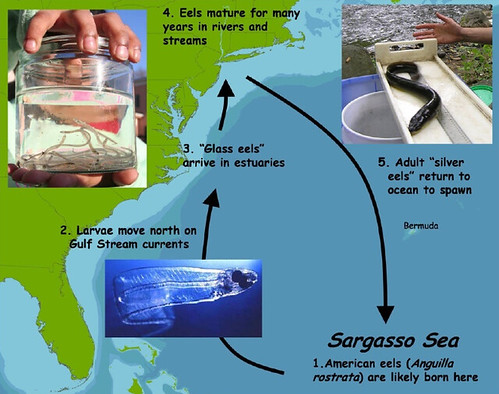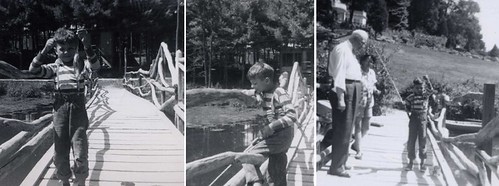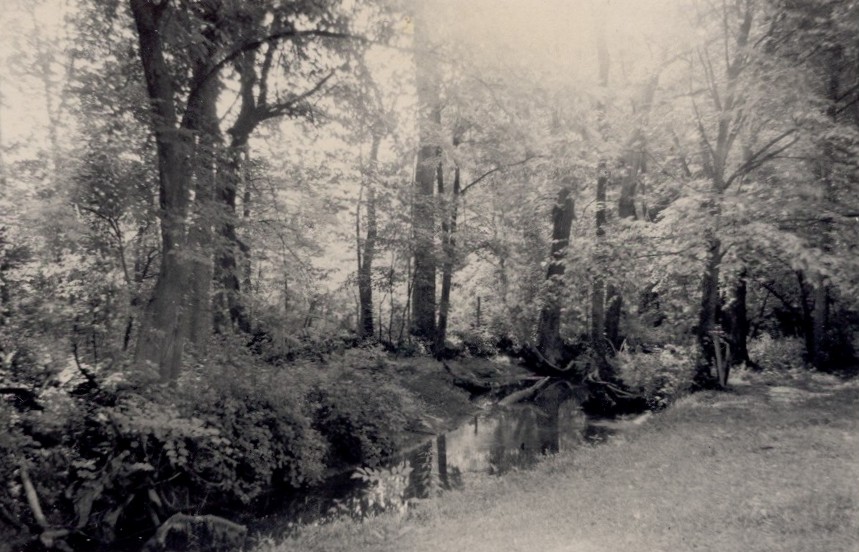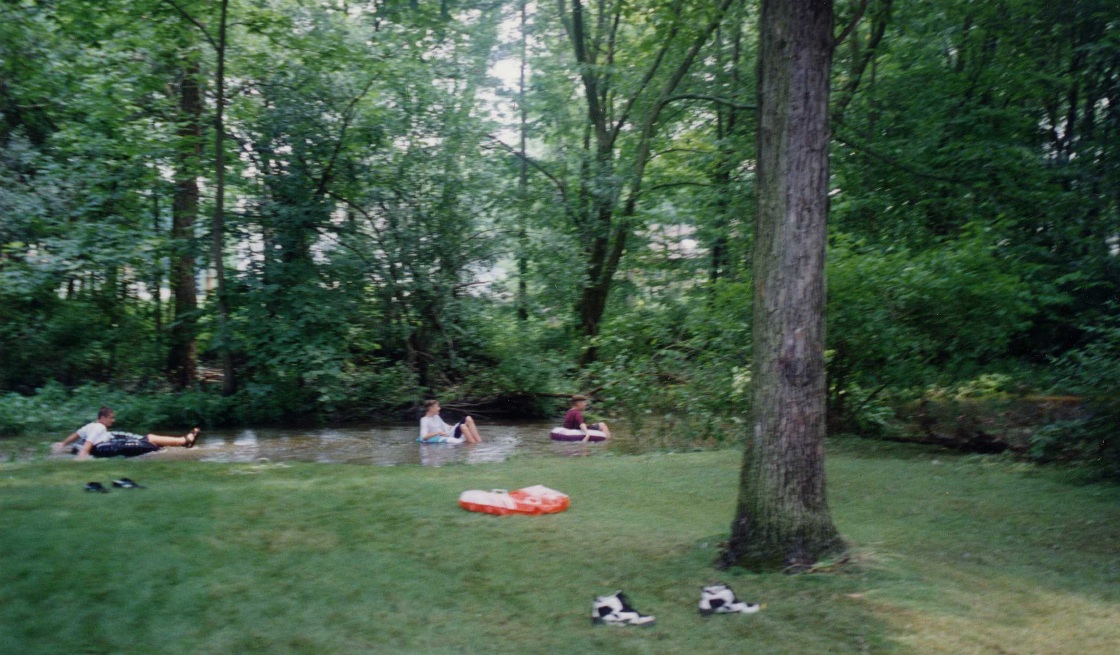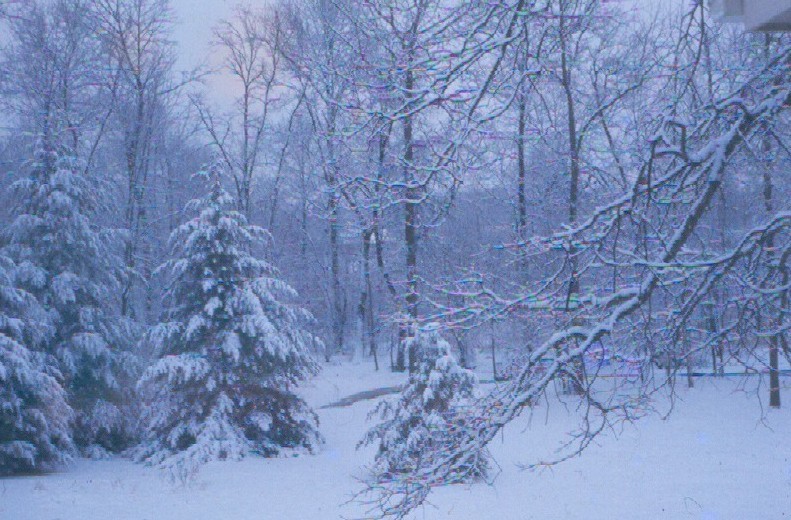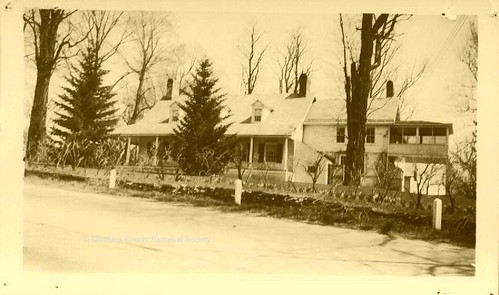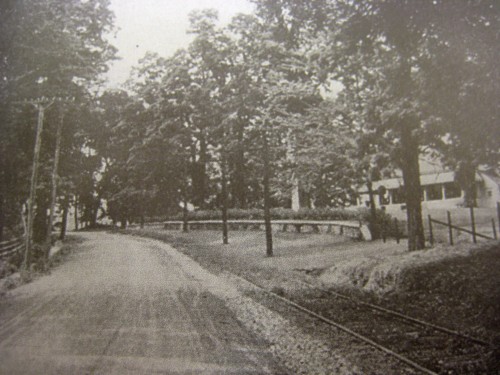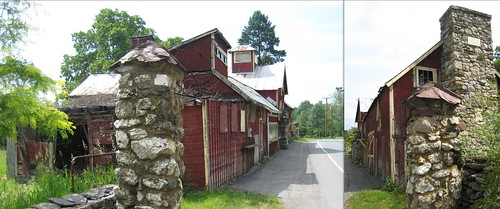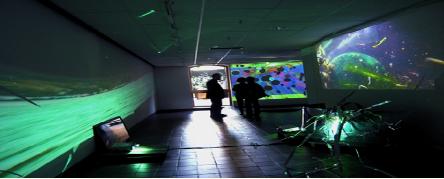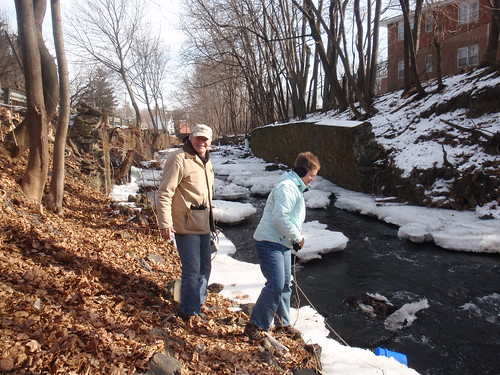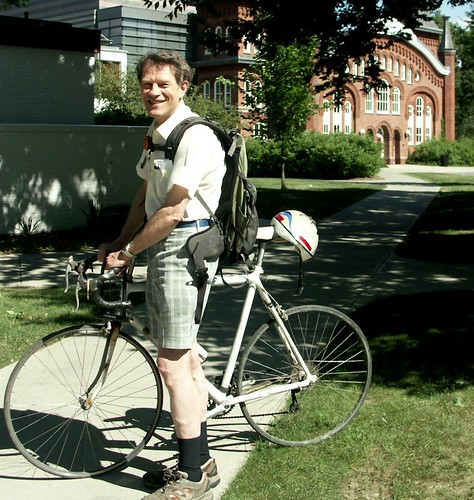Although the Casperkill may not seem like an ideal place for American eel (Anguilla rostrata), many of the people we have interviewed have seen these fish in the creek.
Vinnie Bihn, who lives close to where the Casperkill drains into the Hudson, told us that he “used to live in the pond” in his backyard. In addition to bass, sunfish, perch and catfish, Bihn often caught eel:
Eel is delicious. You’ve gotta get over the looks because they are really tasty. And my mother being Italian, you know…Italians eat anything. So my mother and I would skin them and use them. Actually, not long after we moved here (Bihn moved back to his family home in the 1970s with his wife Kathi), I caught a large eel. Kathi and I skinned it and I gutted it and cut it up into pieces and put them on a plate in the refrigerator for dinner. And then, from the living room, I hear this scream. This was hours later. [Kathi] took the plate out and one of the pieces jumped off the plate. They don’t need a brain because everything takes place in the spinal cord. It was actually moving five or six hours after it had been gutted. But it’s very white, sweet meat. Really good.”
Vinnie Bihn fishing in the Casperkill in the 1950s
Further upstream along Boardman Road, David Page never got to experience the great taste of Casperkill eel meat. When he caught an eel as a kid in the 1950s, he “didn’t know” what the “big, black wriggling thing” was. He says that he got so scared of the fish hanging on to the end of his fishing pole, that he actually flung the pole through the air and the eel “accidentally hit a tree.”
It is unknown how many eel currently live in the Casperkill, but local fish experts have told us that there are definitely some there—although probably not as far upstream as Boardman Road. American eel are common in the tributaries of the Hudson River and in other estuaries of the United States, where they migrate to from the Sargasso Sea (in the Atlantic Ocean). When the eels travel up to North America on the Gulf Stream, they are just tiny glass eels. Eventually the eels mature in the streams and estuaries and then return to the Sargasso Sea to spawn. In recent years eel populations have been declining, so the New York Department of Conservation started up a citizen-science monitoring and research project—The Eel Project—in 2008. To find out more about the Hudson River Eel Project, please visit the DEC website or check out this description of the project from http://dutchesswatersheds.org.
– Eel life cycle image courtesy of Chris Bowser, DEC Science Education Specialist.
– Special thanks to the Bihn’s for letting us use images from their personal collection.
Posted in Casperkill | No Comments »
